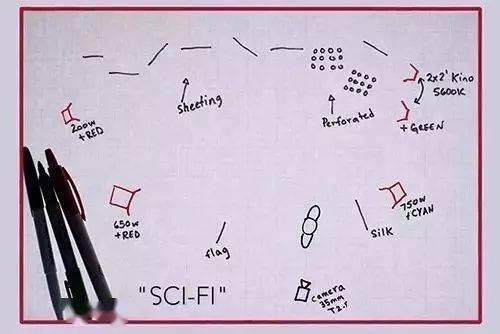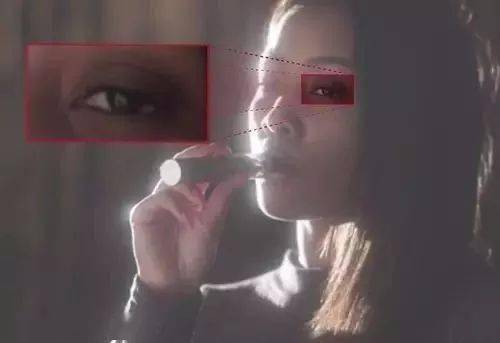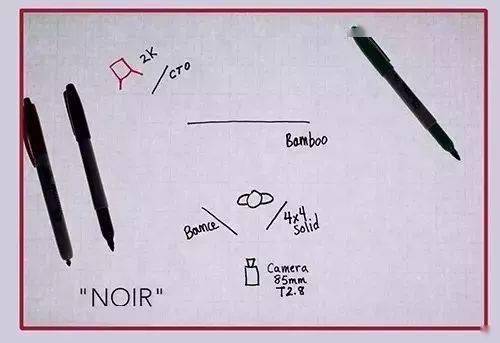Lighting is an important modeling method, which plays a role in conveying information, expressing emotions, setting off the atmosphere, portraying character and psychological changes in the film. It affects the formation of the tone of the film and the presentation of the style of the film, forms a relationship of opposites and unity with the tone of the film, and combines with other modeling methods to express the rhythm and melody of the film.
1. The position of lighting in the film
In film and television production, lighting can set off the atmosphere, highlight the image, reflect the psychology of the characters, and also affect the emotions of the audience. Controlling lighting is an important part of film and television production. The lighting in the film and television scene is different from the lighting in the real world. In order to achieve the desired effect, it is usually necessary to make many settings for the lighting, such as the number of lights, location, Color, brightness, falloff, shadows, and render settings. Therefore, the important position of lighting in film and television production cannot be questioned.

2. The emphasis of lighting
This is the easiest way to stand out the subject from the background. When shooting, we only let the subject light, and let the background drown in the dark, our eyes will naturally be attracted to the bright subject first, so that the person stands out from the background.
Stand out the subject from the group: This is the most expressive level. In a group, whoever is the brightest (darkest) is the most noticeable. Therefore, when shooting, to make whoever is the most eye-catching, we must play the brightest. For example, there are three people in a scene in the German film “The Tin Drum”, and the one in the middle is particularly bright, so he takes away the audience. eyes.
The effect of lighting on the audience’s emotions: As a means of artistic expression, lighting also reflects emotions. For example, at the beginning of the American film “The Godfather”, the yard is sunny, the cheerful Italian folk songs motivate the singing and dancing crowd, and the bright tone is filled with the warm atmosphere of the wedding celebration. At the same time, the room was dark. The godfather is talking about a murderous “business” with his family, and the dark tones are suffocating.

“The Godfather” movie stills
3. Basic three-point lighting skills
(1) Key light
Light source: This is usually the main light source in the scene, and we use it as a reference for color temperature and intensity to set up other lights. If the color temperature of the key light is 5000K, when other lights are selected, the color temperature is roughly the same as that of the key light, and the intensity is lower than that of the key light. Usually I use a soft light source because it makes the subject look better,
Position: The greater the angle of the key light to the camera, the more voluminous the subject will be and the more dramatic it will be visually, so what you need to consider here is how you want it to feel.
Height: If we were lighting from below, it would create an unnatural horror effect. If we raise the light to 45 degrees above the subject, there is a nice transition on the face, a nice sense of shape.
(2) Auxiliary light
Function: The function of fill light is to balance the main light and illuminate the shadow left by the main light.
Position: Usually we want to place it in a complementary position to the key light, which balances out the shadows left by the key light. If you move to other positions, shadows will appear in other areas.
Intensity: When we discuss the relationship between the fill light and the main light, we are actually talking about the light ratio. When adjusting the intensity of the fill light, you have to consider what you want to express and the feeling you want. So try to adjust the balance of key and fill light until you get the effect you see fit.
(3) Contour light
Role: The role of the contour light is to separate the subject and the background, especially when the subject has dark hair, skin, clothes, and the background is also very dark, they are easy to blend together.
Position: We try to be as far back as possible from the subject, being careful not to see the light or light stand in the shot, and being careful not to illuminate the subject’s face as we move to the side.
Intensity: Stronger contour lights create more layering, but can look unnatural. A rim light with a lower intensity will feel more natural.
(4) Background light
Function: The background light is used to illuminate the background, and we use this light to control the coordination between the background and the subject.
Intensity: If you brighten the background light too much, the background will be very bright and distract attention from the subject, but if there is no background light the background will be lacking in life.
4. Example introduction
Mainly introduce the lighting of two movie styles of sci-fi and film noir – excerpted from Aputure
Lighting methods for both sci-fi and film noir genres. The best lighting isn’t complicated, it’s based on the story itself. We can also use simple lighting and various auxiliary equipment to create a variety of scenes.
(1) Science Fiction Movies
In this scene, I want to create a scene where the protagonist is in a spaceship. In the end, the focal length range of 35mm and 2.8 was chosen, because it allows people to be at the core of the shot. Use a 750W light source as the main light to hit the character’s face, make the main light hard, and then use a soft cloth in front of the light to create a soft light effect; if it is backlit, use a 650W spotlight, clip dark red paper, and use a flag Board to block, so as not to let too much light destroy the light effect that has been set on the actor’s face.

For the background, choose some metal flakes to create interesting texture effects, plus perforated metal plates, you can see that the red penetrating the board is the effect of 200W lights. Then use two lights to make sunlight, clip dark green, and illuminate the background to make blue light. This is a very interesting method, you can try it.

(2) Film Noir
Film noir is about harsh shadows and heavy atmosphere, perfect for characters like crime thrillers and femme fatales. For example: We were shooting women and wanted to add some mystery to the scene, giving it a hazy and captivating feel. We fixed the character at 85mm, 2.8 focal length, and started to use 2K brightness to brighten the face of the character. We chose to place the light on the left side of the camera, three-quarters of the backlight. The reason for choosing this position is to make the model present a very Nice facial contour.
Regarding the main light, we need to use a simple way, place a reflector on the left side of the camera, and then place a black rice pineapple on the right side of the camera to form a contrast with the opposite side. It was originally intended to give the character a catch light, but luckily The thing is, this rice pineapple gives her a charming eye.


To add some texture to the background, we bought a cheap bamboo curtain and hung it on two C-shaped light stands, for all of these shoots, we only used one light, which means sometimes it’s not about what you use How many lights are needed, but it can show all the advantages with only one light.
In such a case, in the process of making film and television dramas in a real-world environment, using high-definition cameras to shoot, whether shooting interior or exterior scenes, there will be contradictions between the scene light and the lighting used for shooting, especially the use of LED film and television light sources for shooting. light time. If the lighting engineer can handle the relationship between the two well, so that the two light effects can complement each other and achieve a coordinated and unified shooting light, it will not only produce twice the result with half the effort, but also make the environment real and natural, and the picture is clear and of good quality. If the relationship between the two is not handled properly, the two kinds of light will interfere with each other, resulting in confusion of light, heavy lighting traces, false environment, loss of beauty of the picture, and failure to achieve the real and natural artistic effect. Therefore, lighting, as an indispensable link in film and television works, has come out on top in the development of today’s film and television works.

